
Dundalk is the county town of County Louth, Ireland. The town is on the Castletown River, which flows into Dundalk Bay on the east coast of Ireland. It is near the border with Northern Ireland, halfway between Dublin and Belfast. It is the eighth largest urban area in Ireland, with a population of 39,004 as of the 2016 census.
The vast majority of placenamesin Ireland are anglicisations of Irish language names; that is, adaptations of the Irish names to English phonology and spelling. However, some names come directly from the English language, and a handful come from Old Norse and Scots. The study of placenames in Ireland unveils features of the country's history and geography and the development of the Irish language. The name of Ireland itself comes from the Irish name Éire, added to the Germanic word land. In mythology, Éire was an Irish goddess of the land and of sovereignty.

The National Museum of Ireland is Ireland's leading museum institution, with a strong emphasis on national and some international archaeology, Irish history, Irish art, culture, and natural history. It has three branches in Dublin, the archaeology and natural history museums adjacent on Merrion Square and Kildare Street, and a newer location at the former Collins Barracks, and one in County Mayo relating to country life.

Ardee is a town and townland in County Louth, Ireland. It is located at the intersection of the N2, N52, and N33 roads. The town shows evidence of development from the thirteenth century onward but as a result the continued development of the town since then much of the fabric of the medieval town has been removed.

Vikings invaded the territory around Dublin in the 9th century, establishing the Norse Kingdom of Dublin, the earliest and longest-lasting Norse kingdom in Ireland. Its territory corresponded to most of present-day County Dublin. The Norse referred to the kingdom as Dyflin, which is derived from Irish Dubh Linn 'black pool'. The first reference to the Vikings comes from the Annals of Ulster and the first entry for 841 AD reads: "Pagans still on Lough Neagh". It is from this date onward that historians get references to ship fortresses or longphorts being established in Ireland. It may be safe to assume that the Vikings first over-wintered in 840–841 AD. The actual location of the longphort of Dublin is still a hotly debated issue. Norse rulers of Dublin were often co-kings, and occasionally also Kings of Jórvík in what is now Yorkshire. Under their rule, Dublin became the biggest slave port in Western Europe.
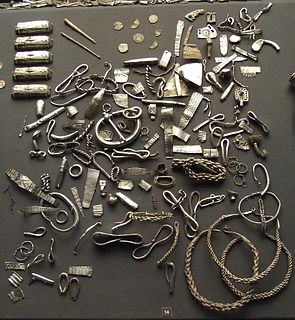
The Cuerdale Hoard is a hoard of more than 8,600 items, including silver coins, English and Carolingian jewellery, hacksilver and ingots. It was discovered on 15 May 1840 on the southern bank of a bend of the River Ribble, in an area called Cuerdale near Preston, Lancashire, England. The Cuerdale Hoard is one of the largest Viking silver hoards ever found, four times larger than its nearest rival in Britain or Ireland, according to Richard Hall. In weight and number of pieces, it is second only to the Spillings Hoard found on Gotland, Sweden.
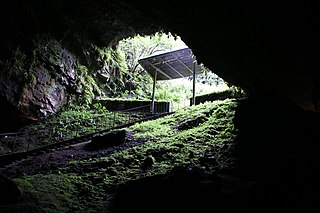
Dunmore Cave is a limestone solutional cave in Ballyfoyle, County Kilkenny, Ireland. It is formed in Lower Carboniferous (Viséan) limestone of the Clogrenan Formation. It is a show cave open to the public, particularly well known for its rich archaeological discoveries and for being the site of a Viking massacre in 928.
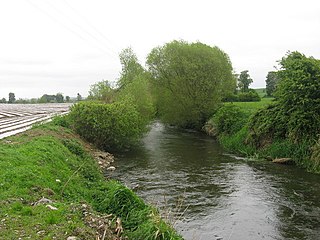
The River Glyde is a river in north-eastern Ireland, flowing from County Cavan to County Louth.
Linn Duachaill is the name of a Viking longphort near the village of Annagassan, County Louth, Ireland. The settlement was built in 841 AD, the same time as the settlement of Dubh Linn, or Dublin. In contrast to Dublin, the settlement was abandoned. It has been argued that possibly because of changing tidal patterns, it lacked continuous access to the sea. The tides would have made access to the water difficult for a number of hours per day.

The Burning of Wildgoose Lodge was an arson and murder attack on Wildgoose Lodge, County Louth, Ireland, on the night of 29–30 October 1816, in which eight occupants were killed, including an infant aged five months. The house was near the County Monaghan border, in the townland of Reaghstown, civil parish of Philipstown, barony of Ardee. Eighteen men were executed for the crime, many of them innocent. The event inspired an 1830 short story by William Carleton (1794–1869) and the circumstances have been the subject of historical and political debate.
Events from the 9th century in Ireland.
Drogheda was a constituency represented in the Irish House of Commons to 1801.
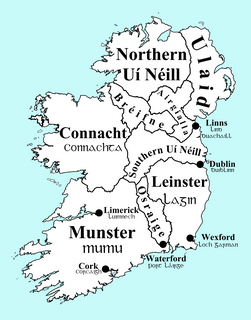
The First Viking Age in Ireland began in 795, when Vikings began carrying out hit-and-run raids on Gaelic Irish coastal settlements. Over the following decades the raiding parties became bigger and better organized; inland settlements were targeted as well as coastal ones; and the raiders built naval encampments known as longphorts to allow them to remain in Ireland throughout the winter. In the mid 9th century, Viking leader Turgeis or Thorgest founded a stronghold at Dublin, plundered Leinster and Meath, and raided other parts of Ireland. He was killed by the High King, Máel Sechnaill mac Máele Ruanaid, which was followed by several Irish victories against the Vikings and the seizure of Dublin in 849. Shortly after, a new group of Vikings known as the Dubgaill came to Ireland and clashed with the earlier Viking settlers, now called the Finngaill.
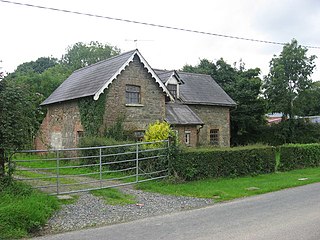
Drumcar is a village and a historical parish, in the barony of Ardee, County Louth, Leinster, northeastern Ireland.

Donaghmore Souterrain is a souterrain and National Monument located in County Louth, Ireland.
Andrew R. Woods is a British numismatist, archaeologist and curator specialising in early medieval and Viking coinage. He is the senior curator of the Yorkshire Museum and was formerly the curator of numismatics at the York Museums Trust.
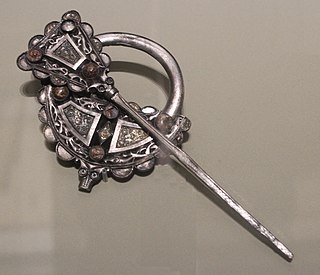
The Roscrea brooch is a 9th-century Celtic brooch of the pseudo-penannular type, found at or near Roscrea, County Tipperary, Ireland, before 1829. It is made from cast silver, and decorated with zoomorphic patterns of open-jawed animals and gilded gold filigree, and is 9.5 cm in height and 8.3 cm wide. The silver is of an unusually high quality for Irish metalwork of the period, indicating that its craftsmen were both trading materials with settled Vikings, who had first, traumatically, invaded the island in the preceding century, and had absorbed elements of the Scandinavian's imagery and metalwork techniques.
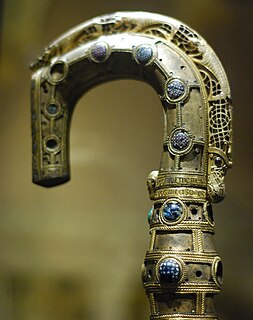
The Lismore Crozier is an Irish Insular type crozier dated to between 1100 and 1113 AD. It consists of a wooden tubular staff lined with copper-alloy plates; embellished with silver, gold, niello and glass; and capped by a crook with a decorative openwork crest.















